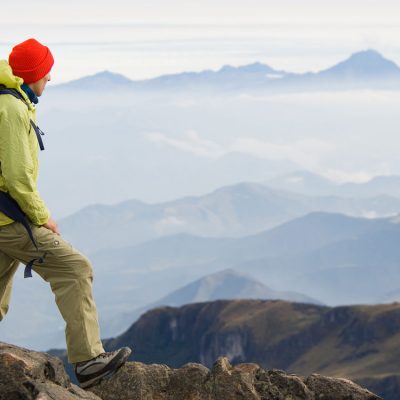Length:
2 days
Skill Level:
Beginner
Max Guide Ratio:
4:1
Recommended Season:
All year
Prior Trip Suggestions:
Old Town Quito & Teleferiqo,
Pasochoa
Follow Up Programs:
El Corazon,
Iliniza North,
Iliniza South,
Antisana
Trip Highlights:
See the new inner domes created from the 1999 eruption of Guagua Pichincha.
Easy descent to Quito from Rucu Pichincha via the Teleferico, cable elevators.
Enjoy the best view of Quito, from Rucu Pichincha.
Pichinchas Traverse
There are three peaks that make up the Pichincha massive, which is located just 10 km west of Quito. The Pichincha traverse starts on the tallest, Guagua Pichincha (15,670 ft / 4.776 m). We will climb its summit and then return to the high altitude refuge for the night. Then we continue our travel by traversing north then east to climb up the basin to Rucu Pichincha. This route will take us on the west side of Rucu, which has the greatest variety of colorful flowering plants. At the summit we will enjoy gorgeous views of Quito and the Avenue of the Volcanoes.
In the Quichua Indian language Guagua means child, presumably named as a comparison between this active volcano and its dormant brother Rucu. Its greatest eruption was recorded in 1660 by the Spanish conquistadors. This eruption created a blanket of ash stretching out as far as 500 km, and the nearby capital of Quito was covered with 40 cm of ash and pumice. There was another, much lesser, eruption in 1999 that covered the nearby capital of Quito with a thin layer of ash. It has since reopened to visitors and climbers.
The last peak we will climb is called Rucu Pichincha. This is Quicha for old person, presumably named for its long dormant state. It is the second highest peak (15,180 ft / 4.627 m) of the Pichincha massive and is the closest to Quito.
We pass just below Padre Encantado, which means bewitched priest. It is said to be named after the mythical tale of three friars that became disoriented during an attempt to climb Pichincha. During a storm they found shelter in a cave, and when the weather calmed one of the brothers went to investigate the area and look for the way out. He didn’t return before the weather turned foul again. The next day the two brothers went out looking for their lost brother. They were delighted to spot him kneeling on a high summit, but when they approached him they found he had become a rock pillar, praying eternally to God.
The Pichinchas are also an important historical landmark for Ecuador, as this was the site of the Ecuadorian Independence battle. It was here that the defeat of the Royalist forces loyal to Spain marked the liberation of Quito on May 24, 1822. This secured the independence of the Province of Quito, which would later emerge to form the present day Republic of Ecuador.
photo gallery
trip itinerary
Day 1:
Drive from Quito to an elevation of 4.100 m on Pichincha, just below Guagua. From here we begin our ascent to Guagua. At the summit, we will be able to see the new inner domes created from the 1999 eruption. We then hike down a bit and set up our high altitude campsite, have dinner and turn in for the night.
Day 2:
After breakfast we begin our traverse to Rucu Pichincha. After an hour and a half of hiking we will pass below the second peak, El Padre Encantado. Two hours of climbing beyond this middle peak will take us to the summit of Rucu. Here we will have lunch while enjoying the best view of Quito. We then have a short walk downhill to Cruz Loma, where we will board the new cable elevators that will take us back to Quito.
Note:
Every effort will be made to adhere to the itinerary, but unforeseen circumstances may require last minute changes. Weather conditions, road conditions, vehicle breakdowns and the health of climbers can all contribute to schedule alterations. Please be prepared to be flexible when necessary.


